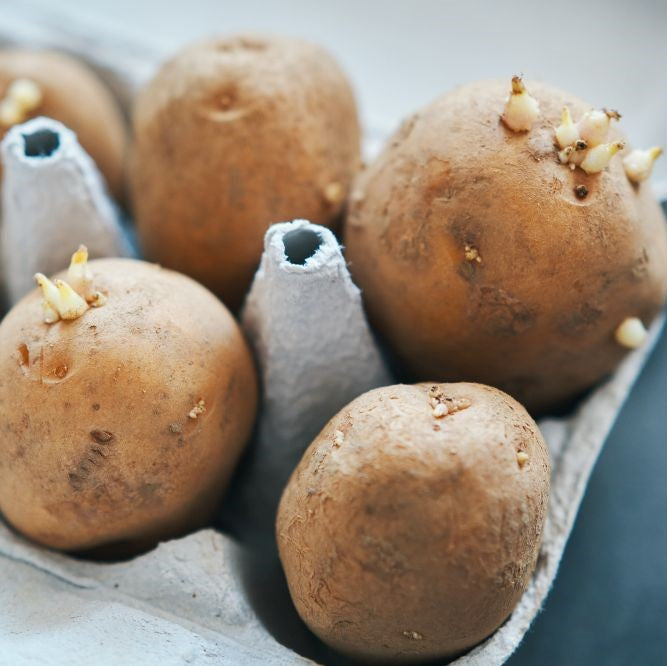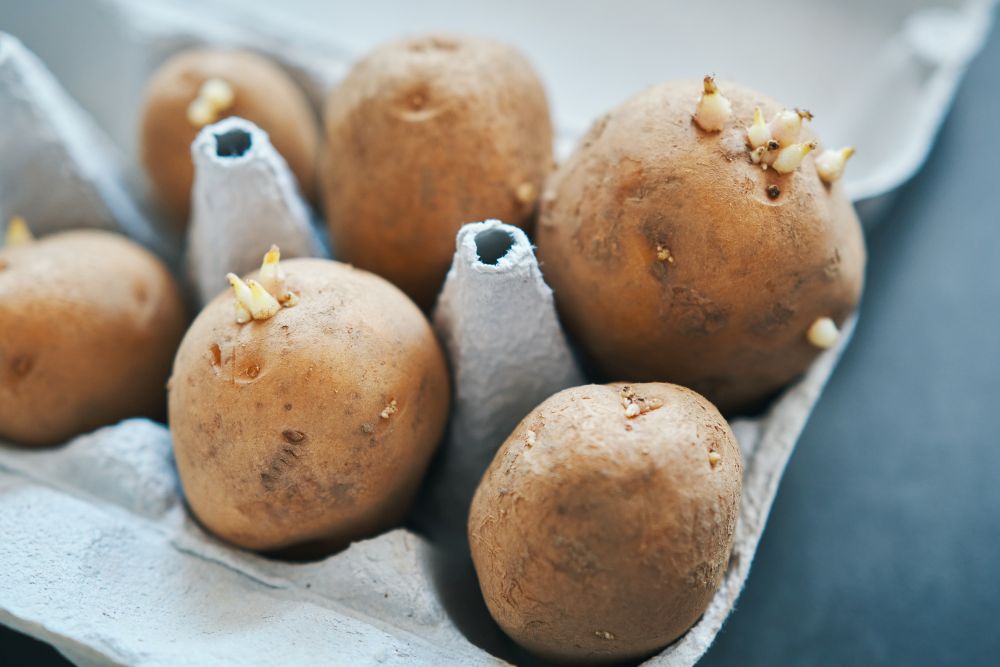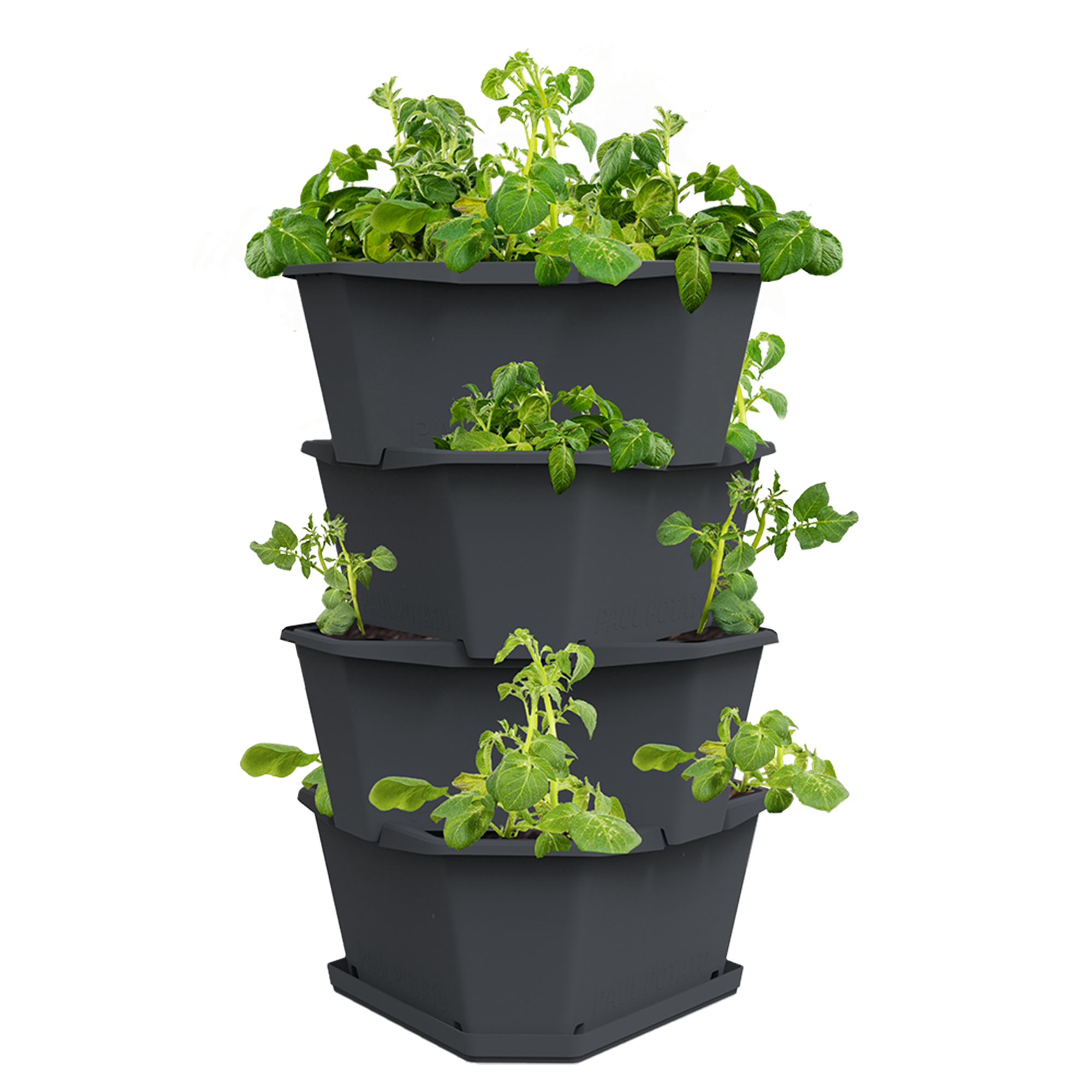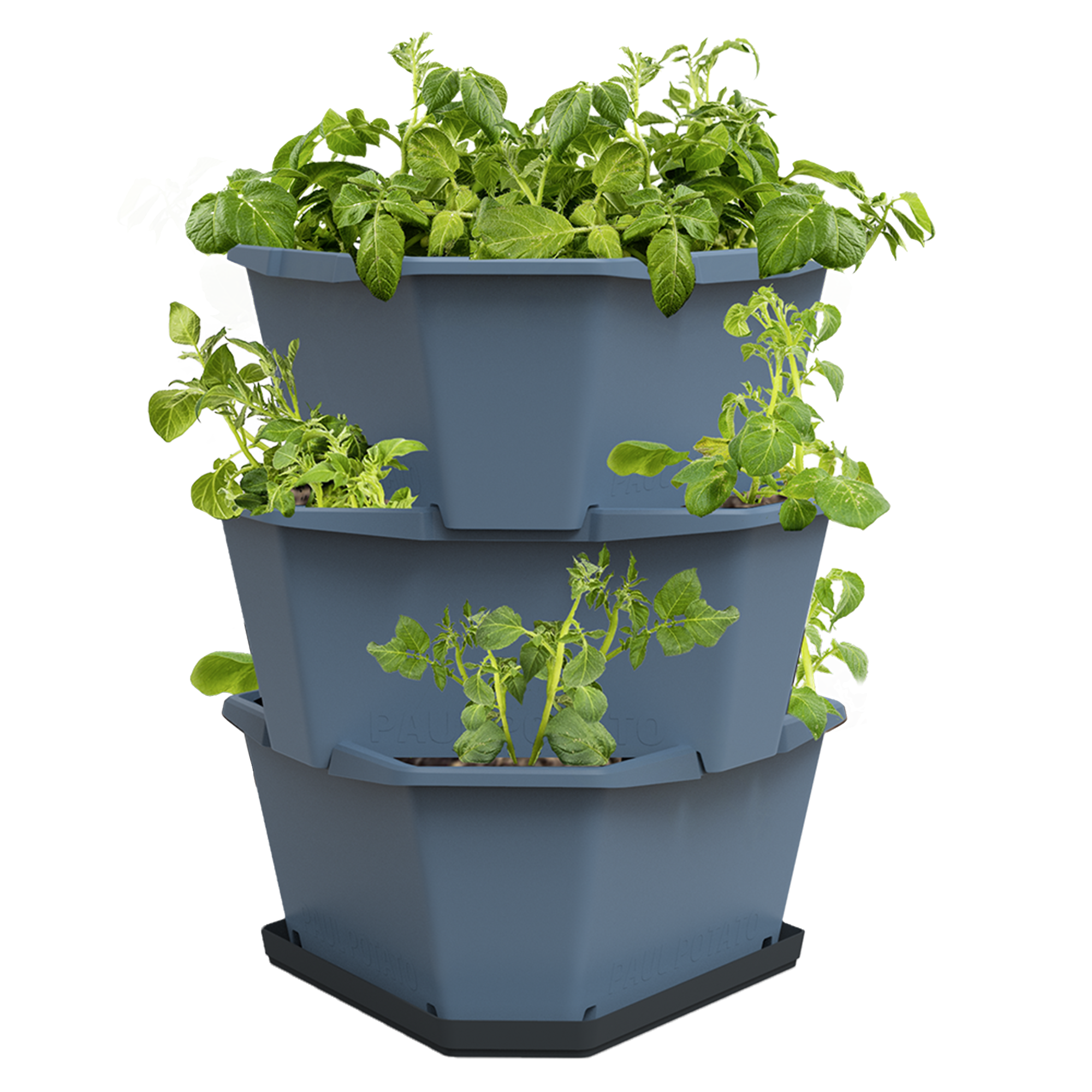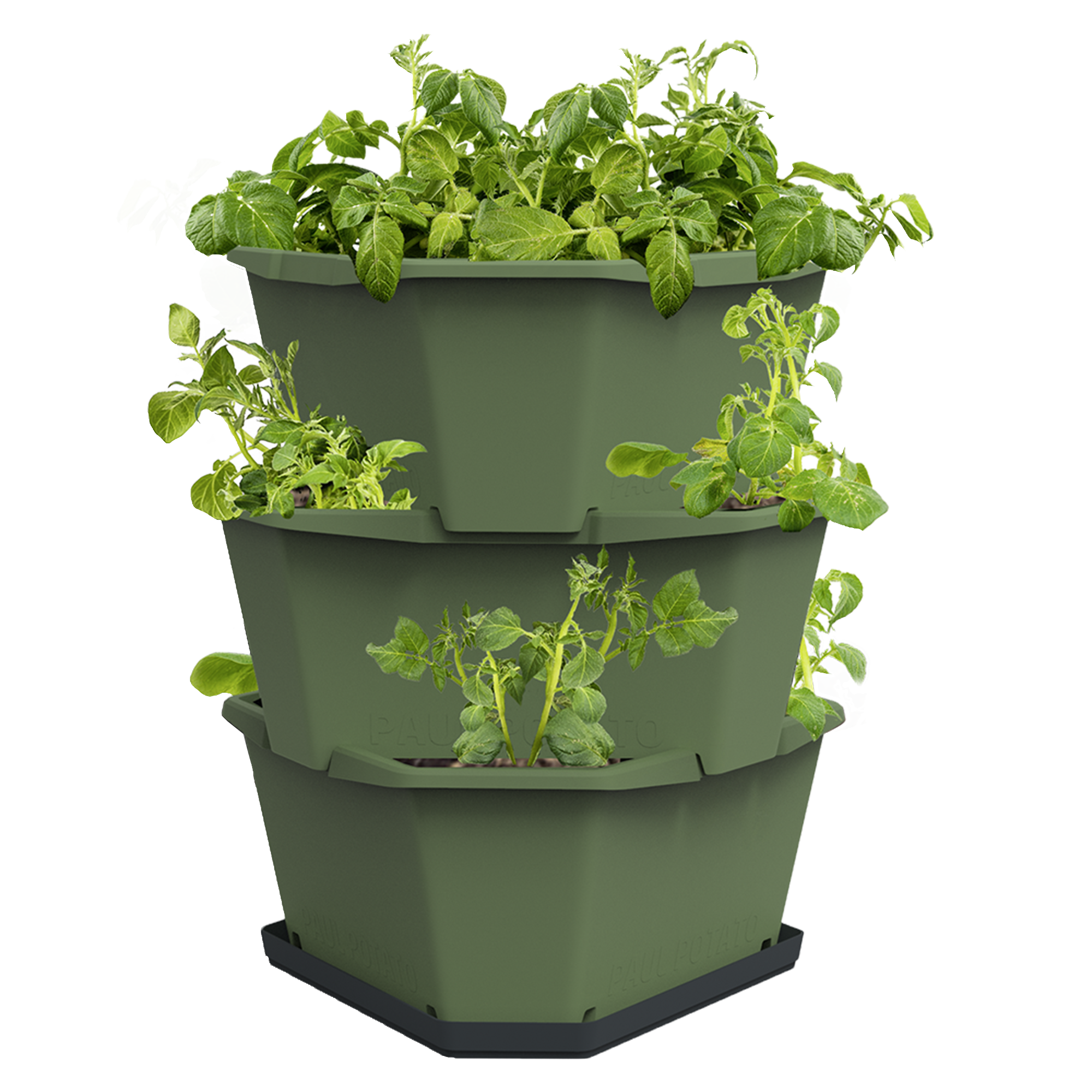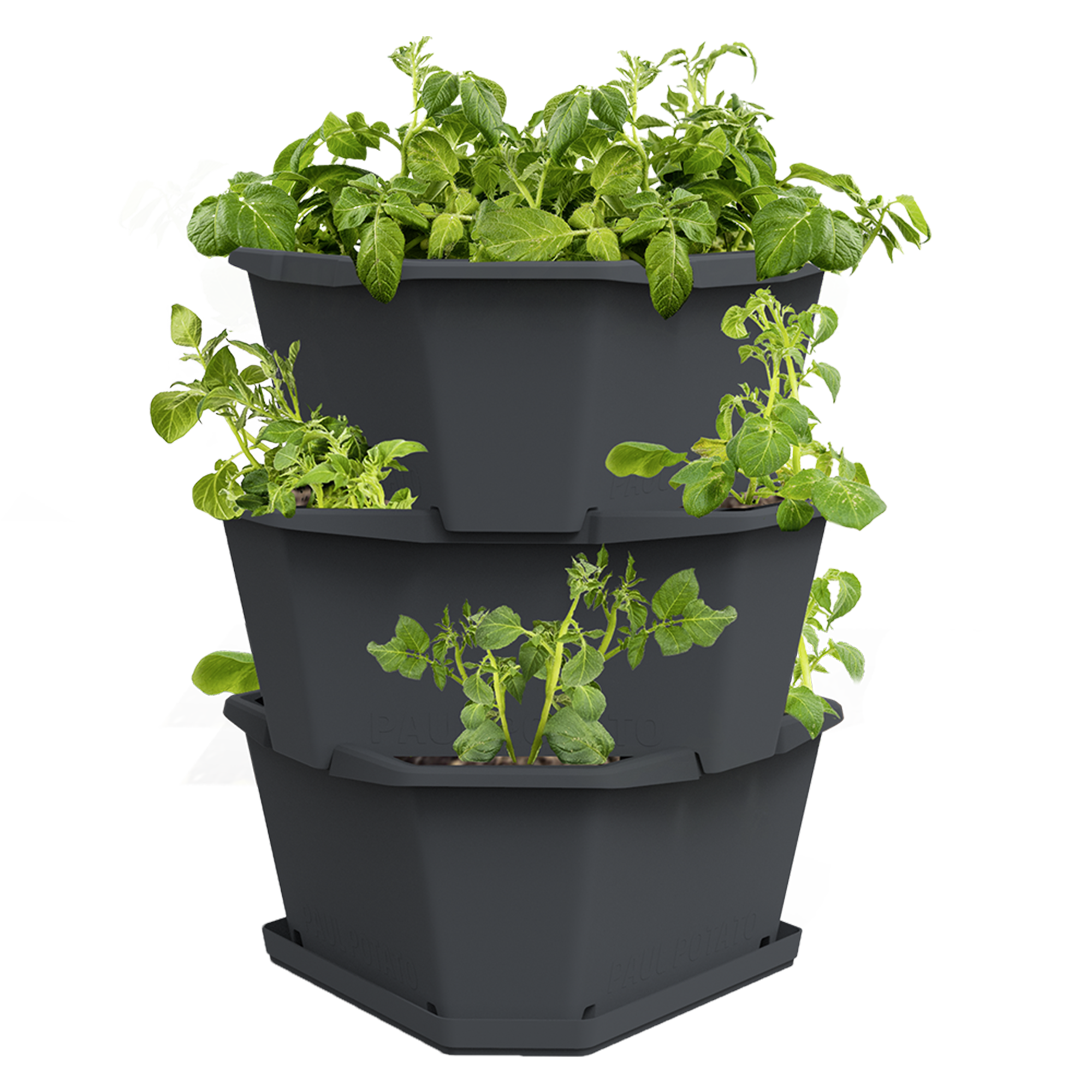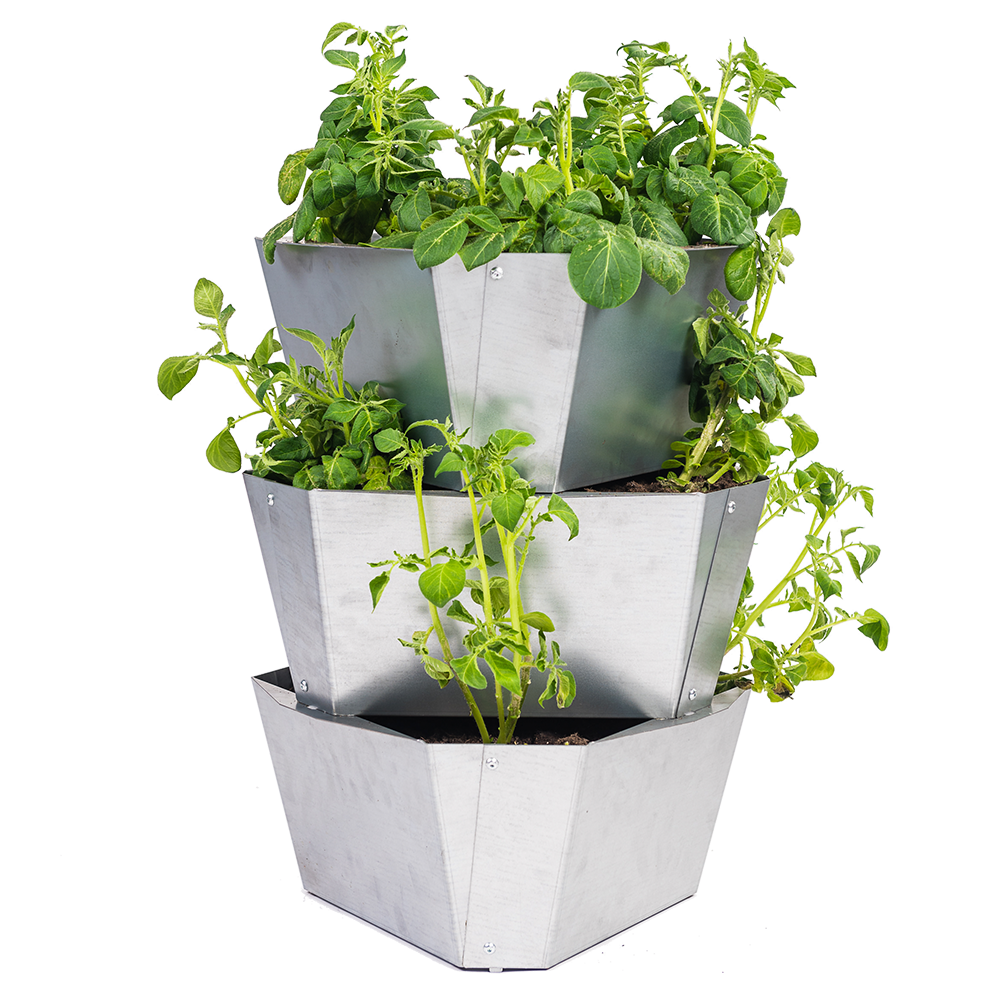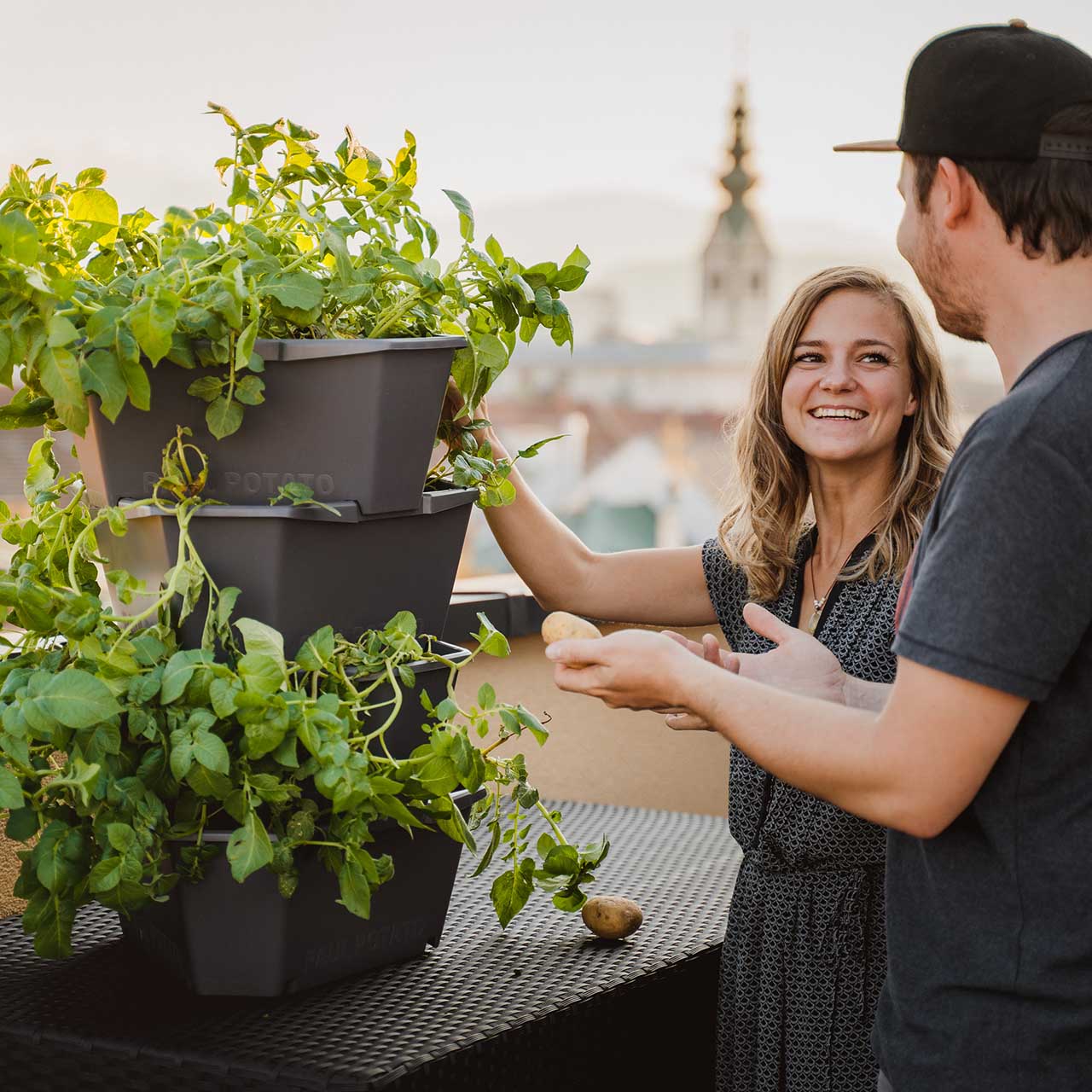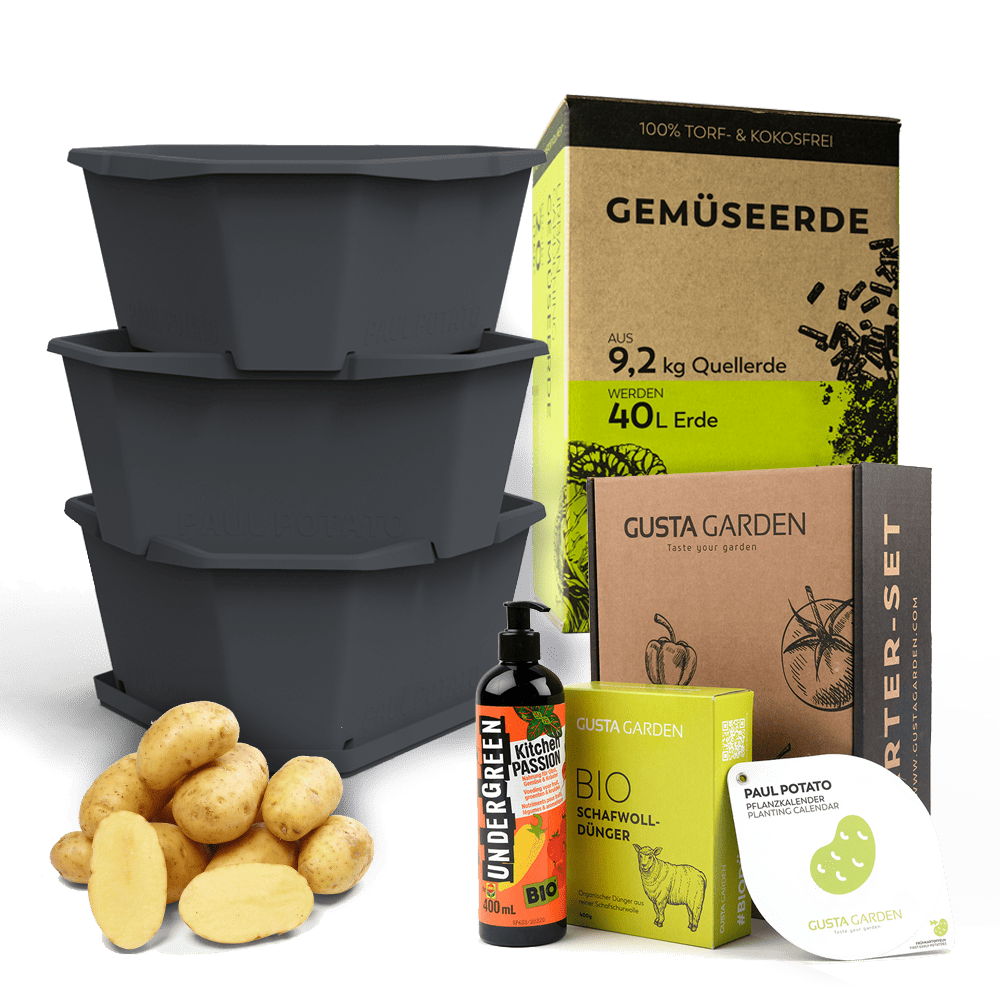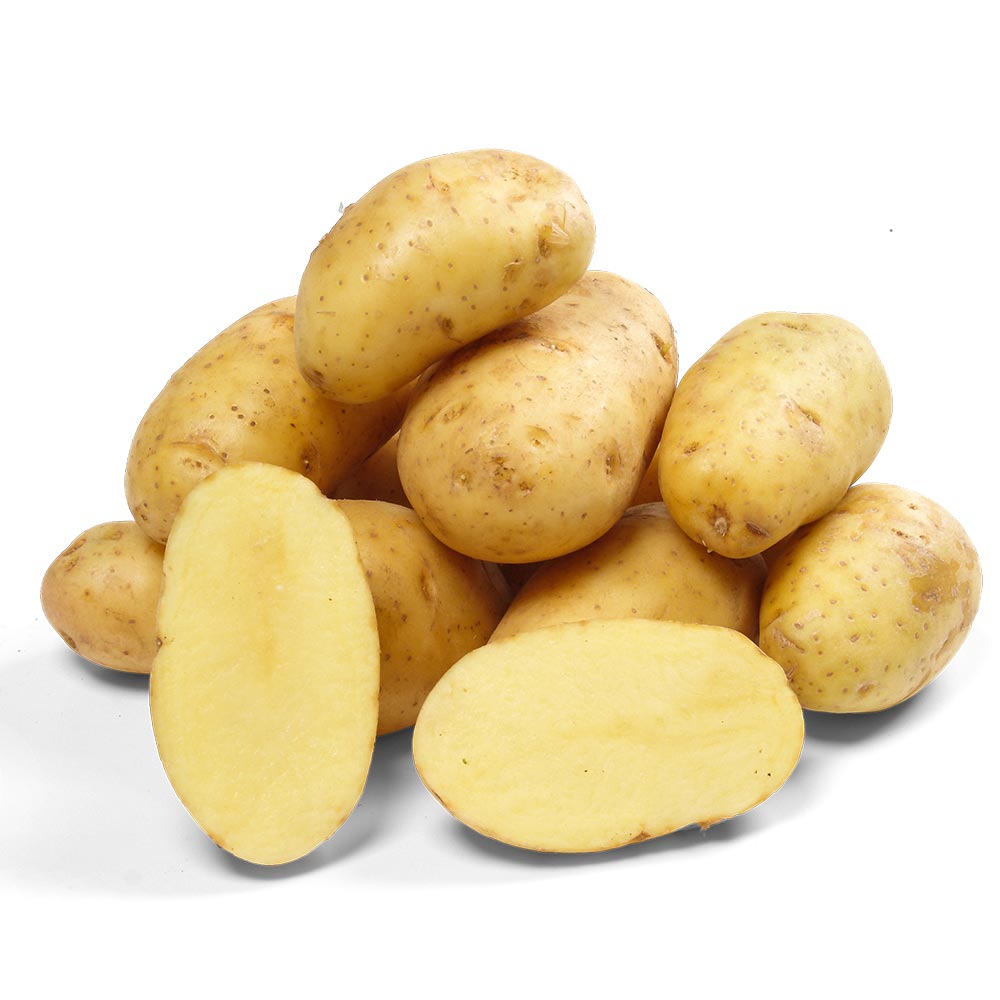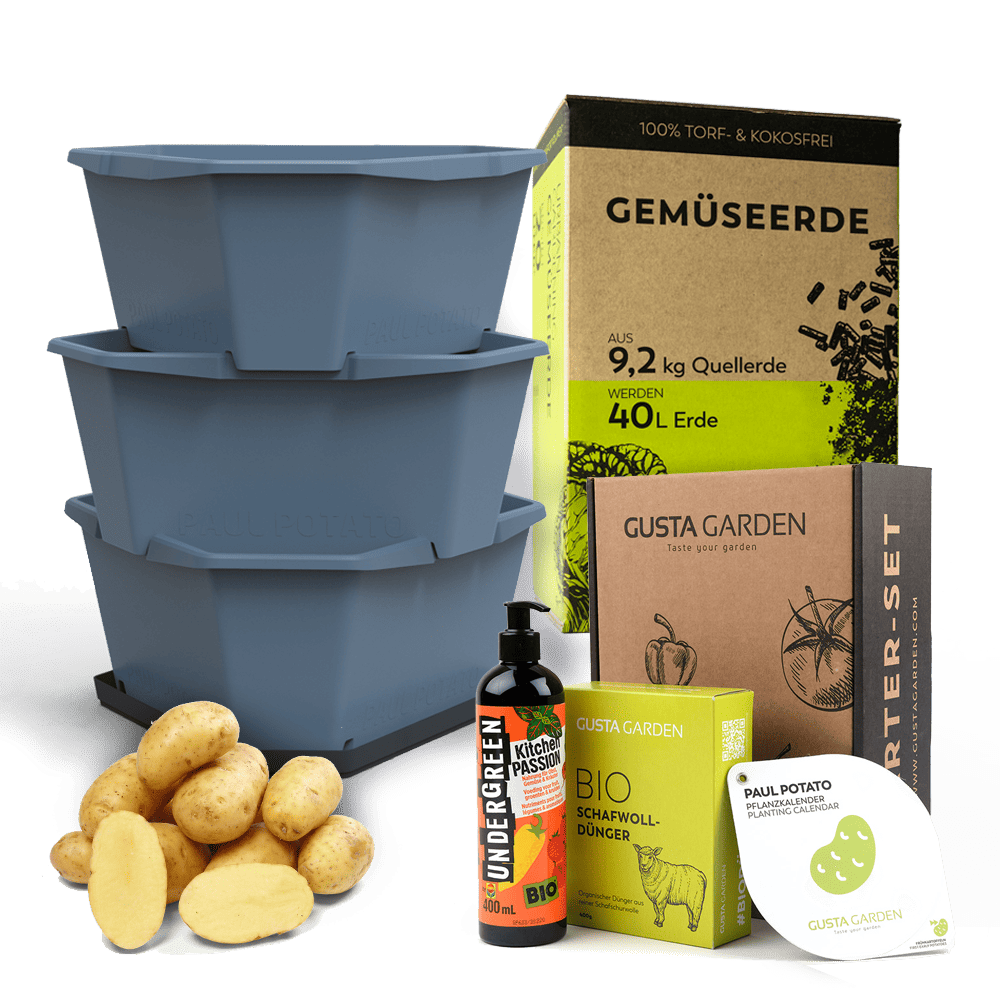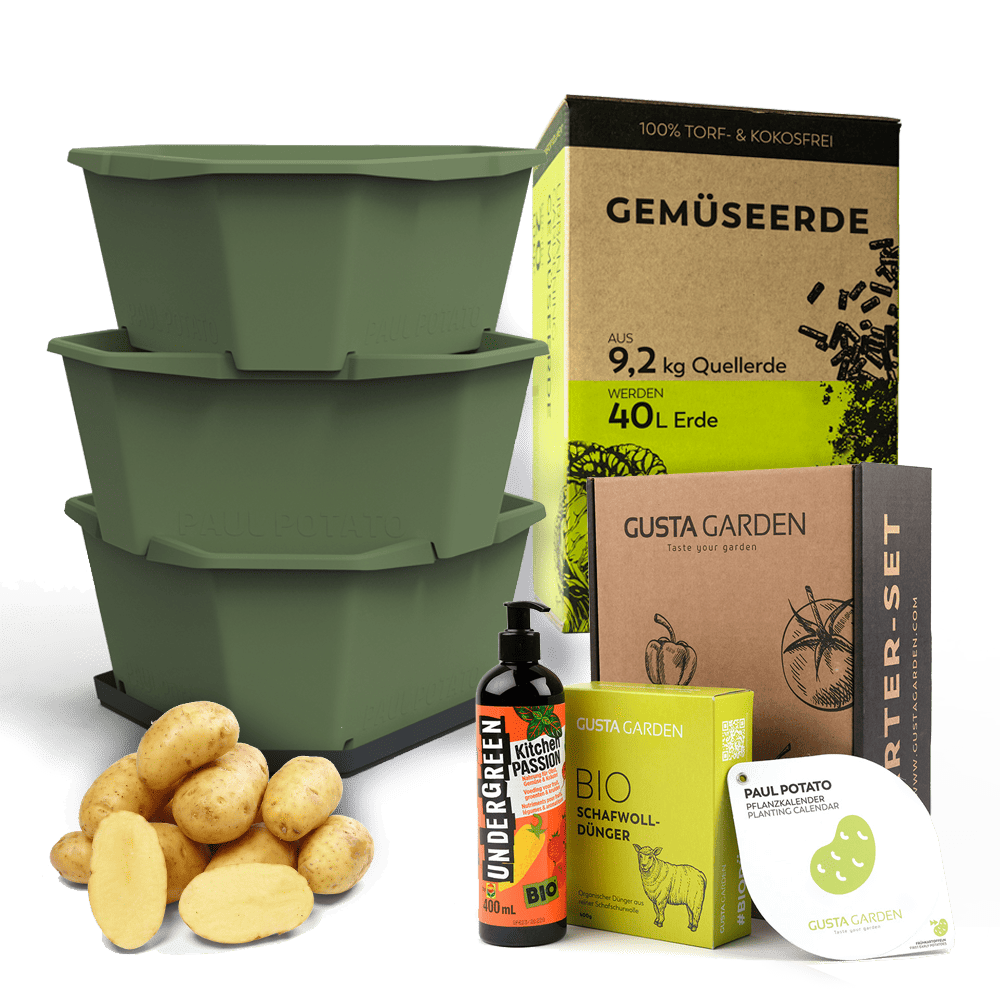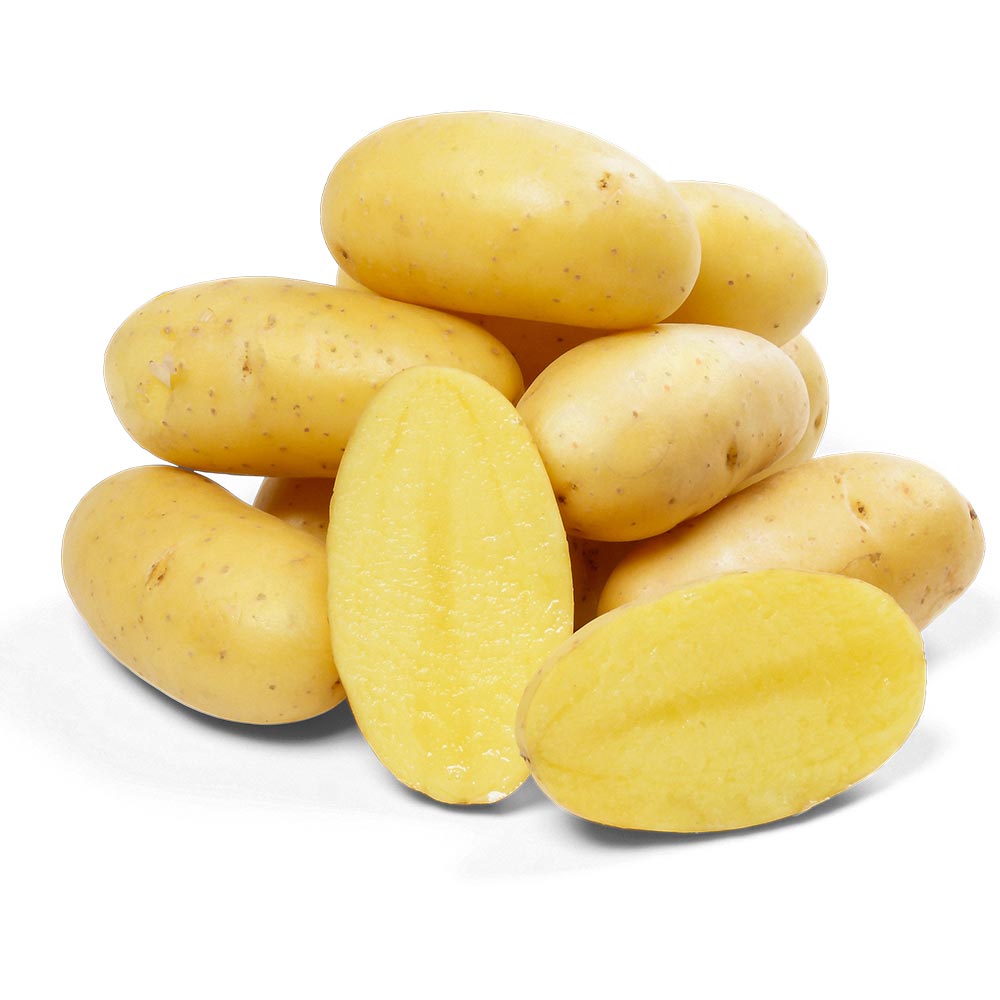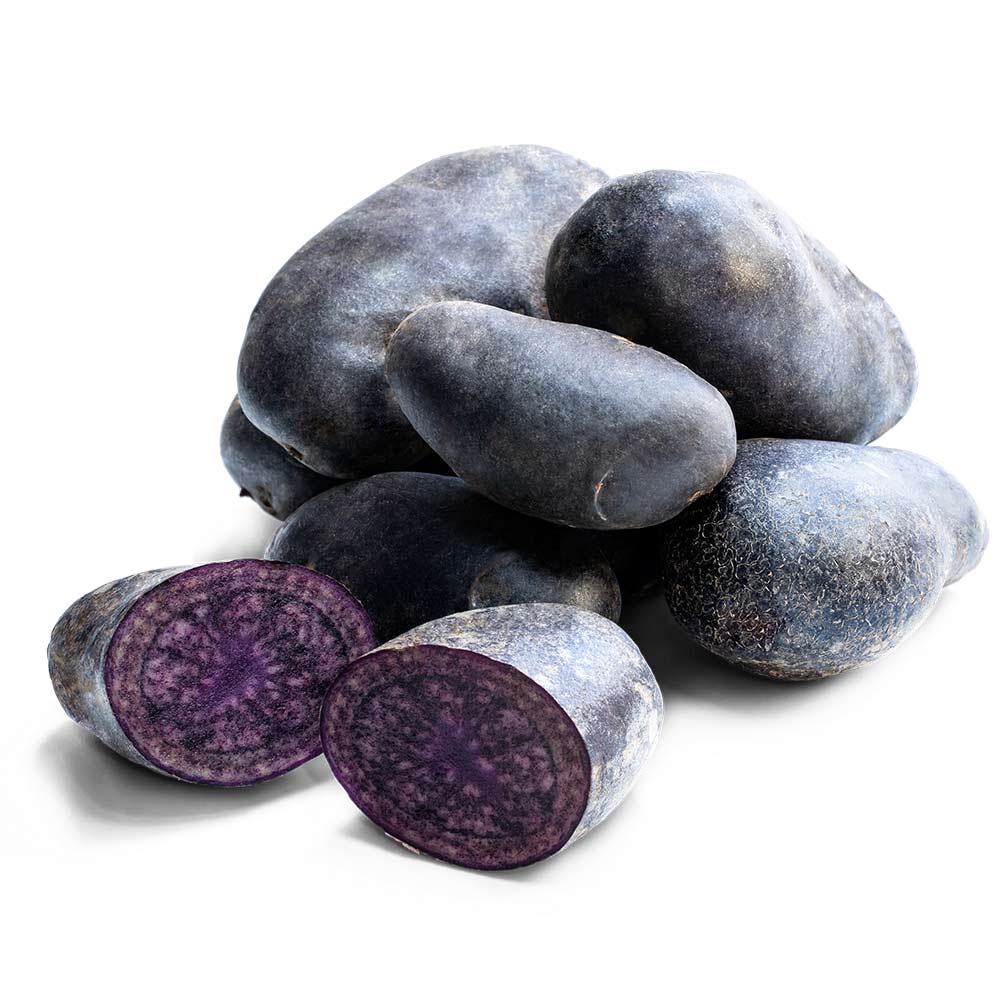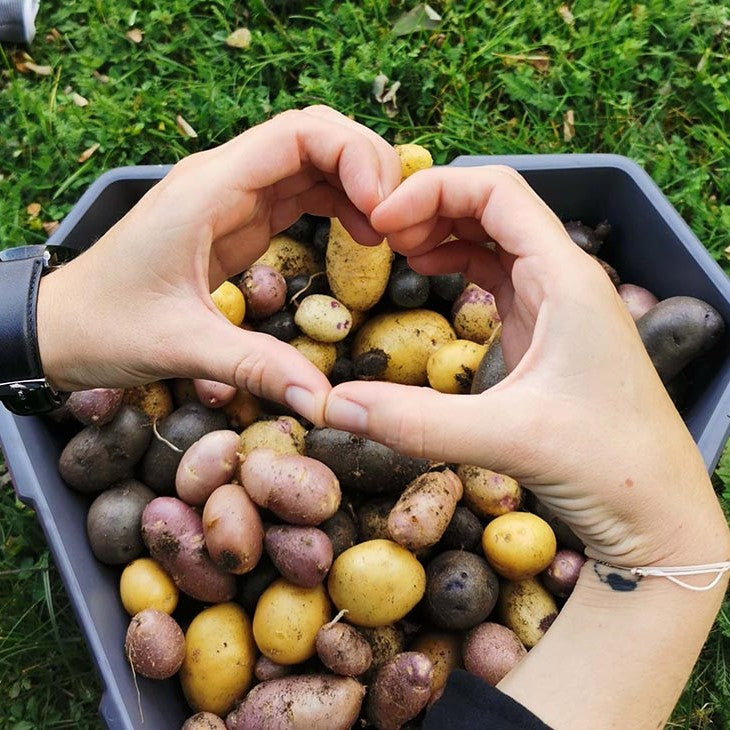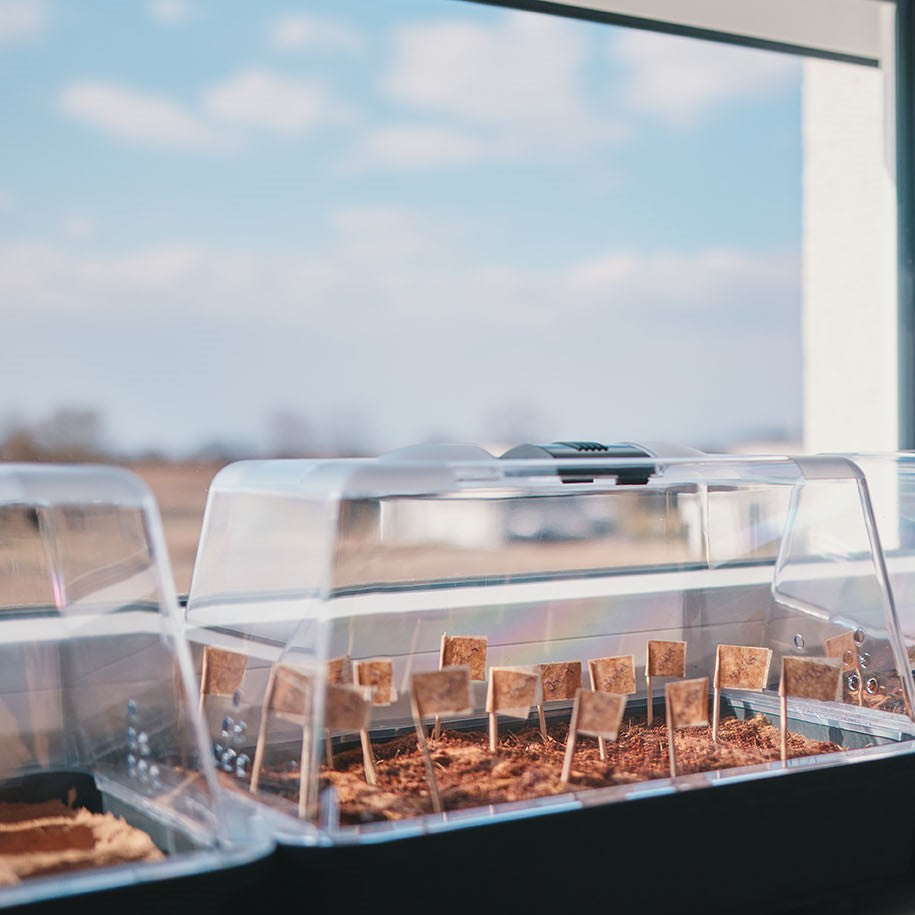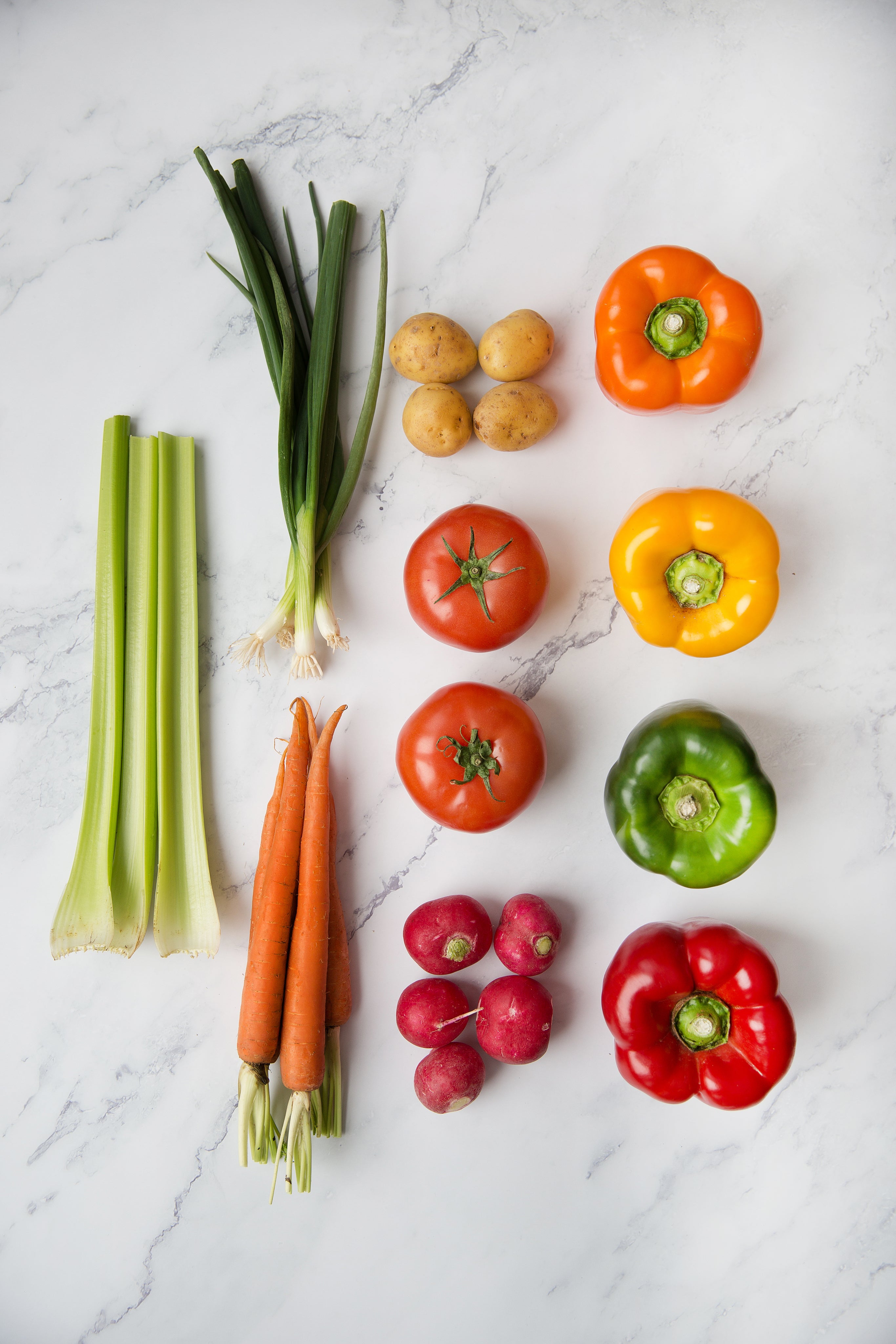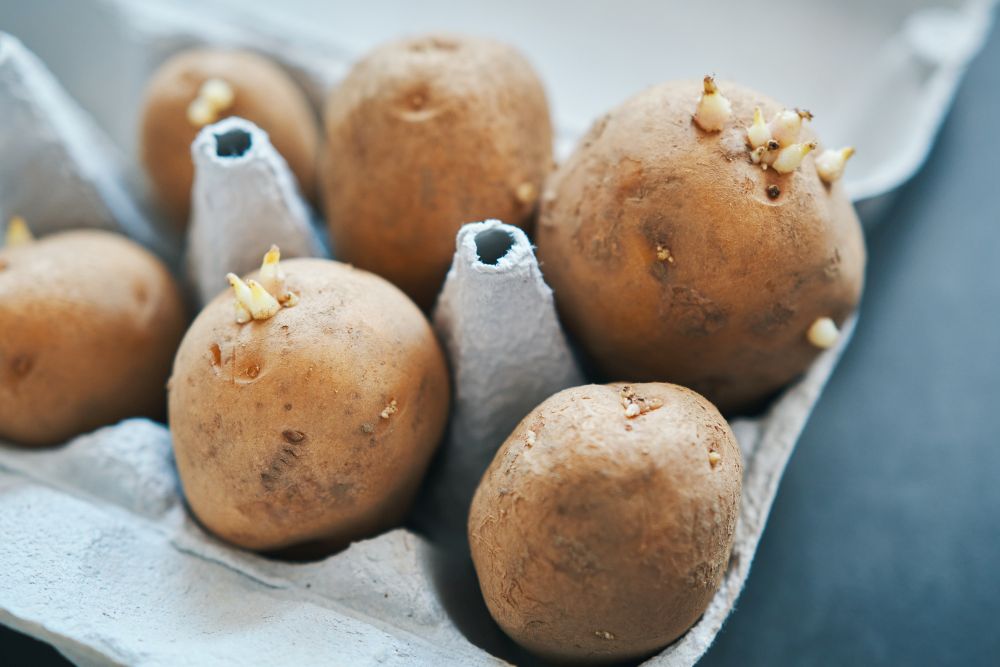 You have probably heard or read about it: “Pre-germinating seed potatoes”.
You have probably heard or read about it: “Pre-germinating seed potatoes”.
You can find out here what this actually means, how it works best and what advantages it has for your future potato harvest 👇
Like any plant, the potato has to contend with all sorts of adversities once it has to grow outdoors. From unpredictable weather to diseases or pests, the plant has to deal with a lot before it can give you a productive harvest. But you can support her by giving her a little help getting started.
Here's how it works
Pre-sprouting is not magic and practically happens by itself. You have probably already experienced that the potatoes you bought have started to form shoots at home in their net or paper sack. We now simply want to achieve the same effect under controlled conditions. The best time to start pre-germinating is from mid-February for early varieties and mid-March to mid-April for late ones.
First, you need a suitable container. For example, normal cardboard egg cartons have proven useful here. The seed potatoes are simply placed in these with one “eye” facing upwards. By “eyes” we mean the places on the potato where it will sprout. These are small indentations or lumps on the tuber. In principle, you don't even need soil to germinate your potatoes. Simply place the egg carton in a bright, cool (10-15° C) place and spray the potatoes with a little water over the next few days to prevent them from drying out. After 4-6 weeks you can plant the potatoes in your PAUL POTATO.
Alternatively, you can also pre-germinate in soil. Here the potatoes need around 6 to 8 weeks to form beautiful shoots.
The advantages
1. Protection against disease
By pre-germinating, which happens in a protected room, you bring stronger tubers outdoors and thus avoid, for example, some diseases that can occur at certain stages of development.
2. Resistance & resilience
The potatoes become more resistant to unfavorable environmental influences.
3. Harvest earlier
By pre-germinating, you have a certain head start in development because the tubers have already developed smaller shoots before they are even planted in the ground. This means you can harvest them earlier. With early varieties, with a bit of luck, as early as the asparagus season.
